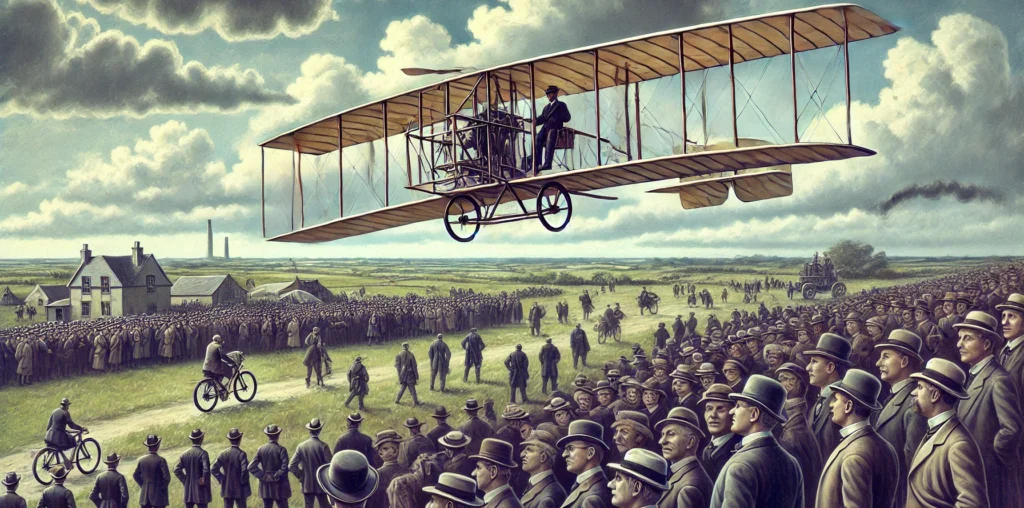The Wright Brothers’ first flight demonstration in Europe on October 4, 1908, was a monumental event that showcased the incredible advances in aviation technology to the wider world. This demonstration, held in the French town of Le Mans, marked a turning point in the global recognition of powered flight and highlighted the Wright Brothers’ contributions to aviation.
Background The Wright Brothers, Orville and Wilbur, had successfully conducted the first powered flight in Kitty Hawk, North Carolina, in 1903. However, despite their success in America, skepticism remained high in Europe, where many people doubted the practicality and authenticity of their accomplishments. In those early years of aviation, various inventors across Europe had been experimenting with flying machines, and the desire to conquer the skies was a symbol of technological prowess and national pride. The Wright Brothers decided to conduct a series of demonstrations in France in 1908 to prove their capabilities to the European scientific community and to gain the recognition and support needed for the commercialization of their aircraft.
What Happened On October 4, 1908, Wilbur Wright took to the skies in front of an eager crowd at the Hunaudières racetrack near Le Mans. The gathering included engineers, aviation enthusiasts, journalists, and skeptics—all eager to see if the stories they had heard about the Wright Brothers’ achievements were true. Wilbur piloted the Wright Model A, an improved version of their earlier Flyer, which featured a two-propeller design and a more refined control system. The plane had a 35-foot wingspan, a 25-horsepower engine, and the ability to carry a passenger.
The demonstration began with Wilbur starting the small, but powerful engine and positioning the aircraft along the launching rail—a mechanism that the Wrights used to give their plane the necessary lift-off speed in the absence of a long runway. As the aircraft accelerated, it lifted smoothly into the air, much to the amazement of the crowd. The plane performed a controlled, sustained flight for nearly five minutes, executing a series of graceful turns and figure-eights. At one point, Wilbur climbed to a height of about 100 feet, giving the audience a clear view of the marvel of controlled powered flight.
The demonstration showed that the Wrights had mastered the three critical components of aviation—lift, propulsion, and control. Wilbur’s ability to navigate in a controlled manner, rather than simply lifting off and landing, convinced many of the onlookers that the Wright Brothers’ achievements went far beyond previous attempts at flight. In an era when most aircraft designs could only manage brief and unstable hops, the demonstration was a revelation.
Impact for the Future The October 1908 demonstration earned the Wright Brothers immediate credibility in Europe, silencing skeptics and establishing them as pioneers in aviation technology. It led to numerous business opportunities, including licensing deals and military contracts from France, Germany, and Britain. Their success also inspired other aviation pioneers and sparked international interest in aircraft development, driving rapid advances in aviation technology in the years leading up to World War I. This demonstration marked the beginning of an era that would transform travel and human exploration.

